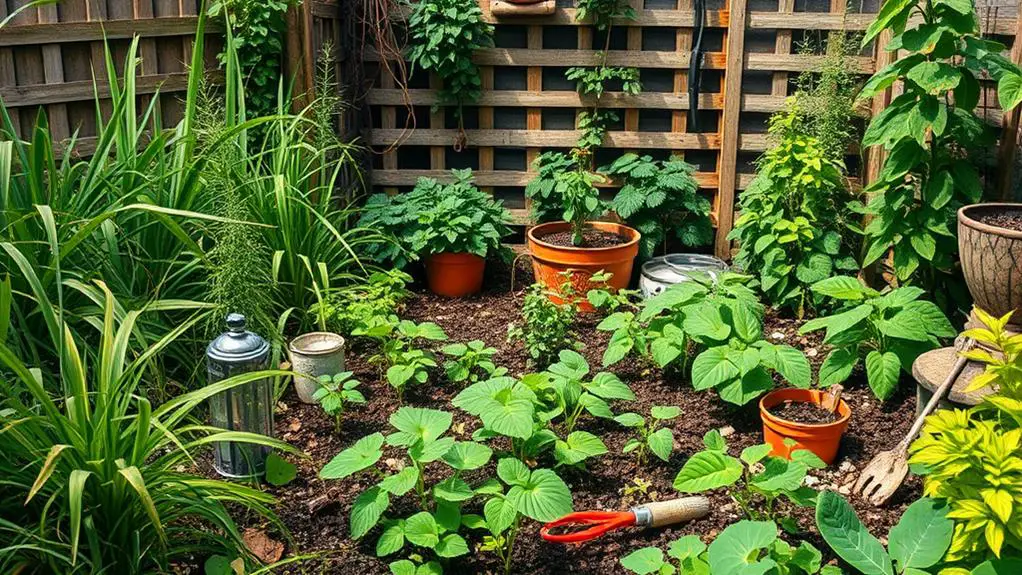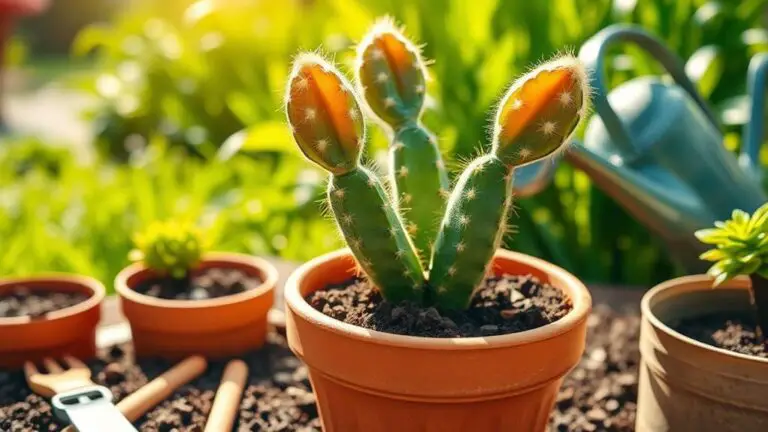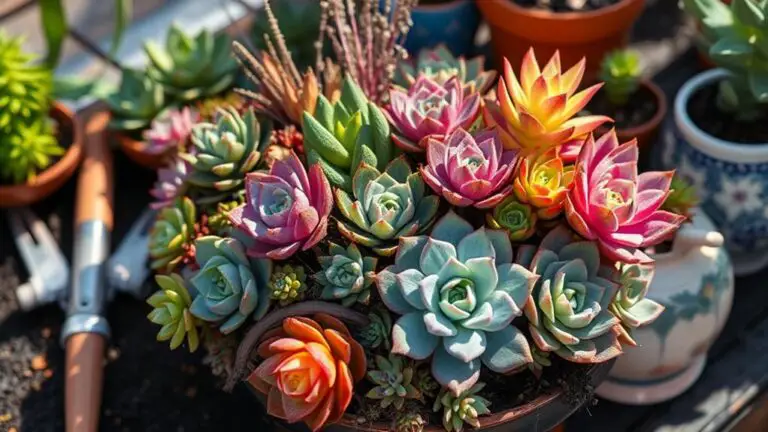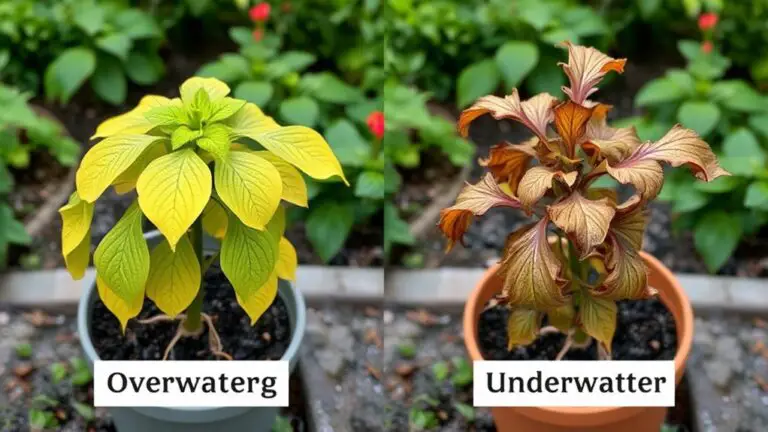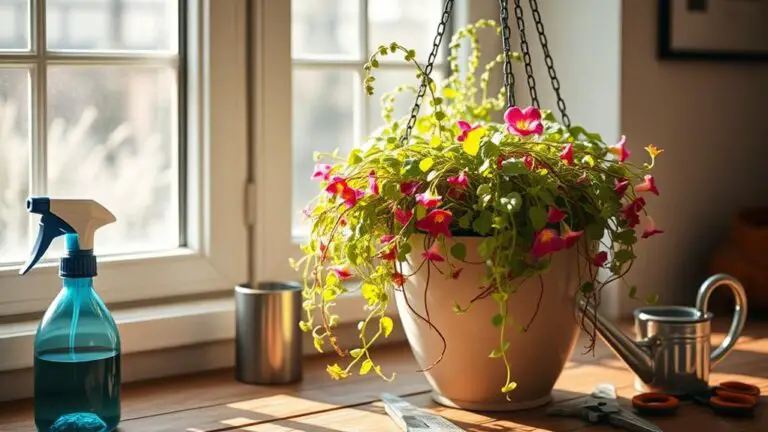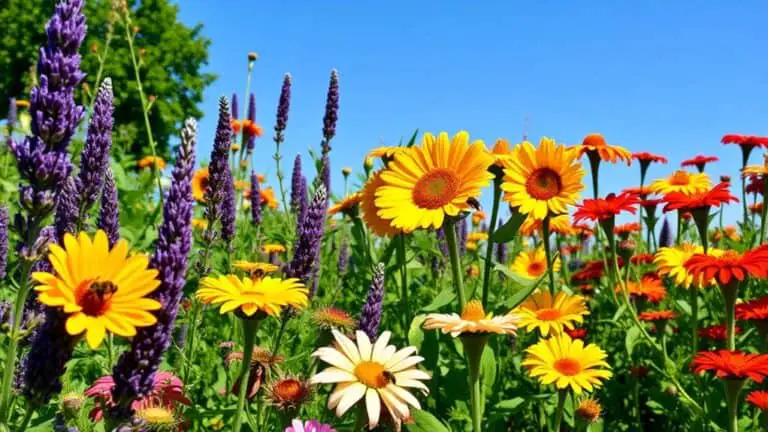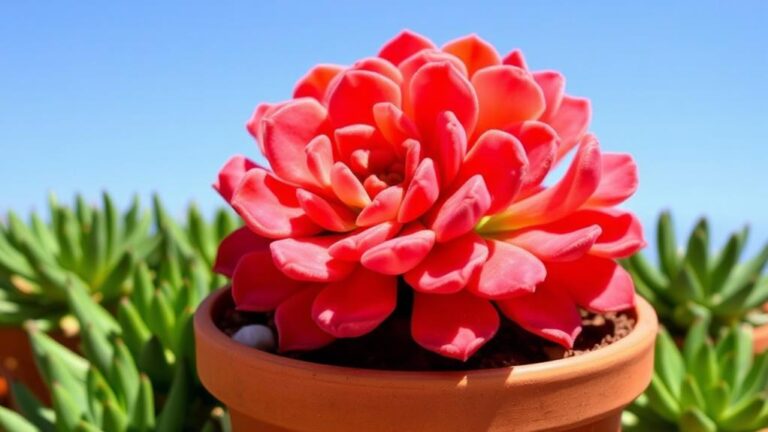The 7 Worst Gardening Mistakes Beginners Make
Starting a garden can be incredibly rewarding, but as a beginner, you might unknowingly make some common mistakes that can hinder your success. It's easy to overlook essential elements like plant selection based on your local hardiness zones or proper watering techniques. You might also underestimate the importance of soil quality and pest management. These errors can lead to disappointing results, but don't worry—there are straightforward solutions to help you avoid these pitfalls. So, what are these seven mistakes, and how can you steer clear of them to guarantee your garden thrives?
Plant Selection and Timing
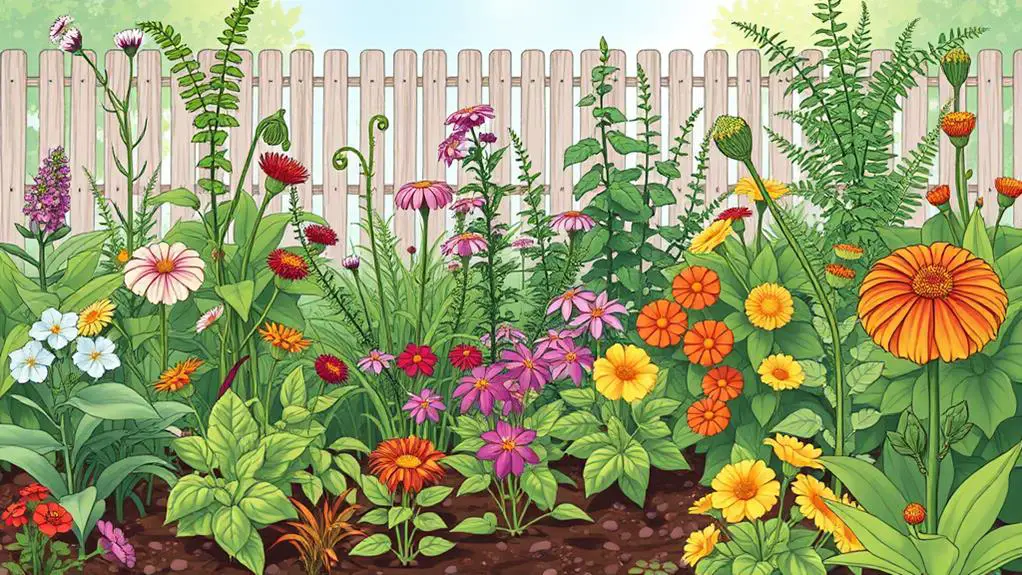
When you're starting your gardening journey, selecting the right plants and timing their planting correctly is vital. First, you need to understand your local hardiness zones. These zones will guide you in choosing plant varieties that can thrive in your climate.
Planting at the wrong time of year can expose plants to extreme temperatures, which negatively impacts their growth and survival rates.
Seasonal timing is essential. For instance, cool climates won't support warm-season crops if planted during winter, leading to poor results. Always follow seed packet instructions regarding planting dates and germination conditions. This guarantees your plants start off strong and healthy.
Companion planting is another significant aspect. Researching plant compatibility can enhance growth and deter pests. For example, planting marigolds near tomatoes can repel harmful insects.
Planting Location
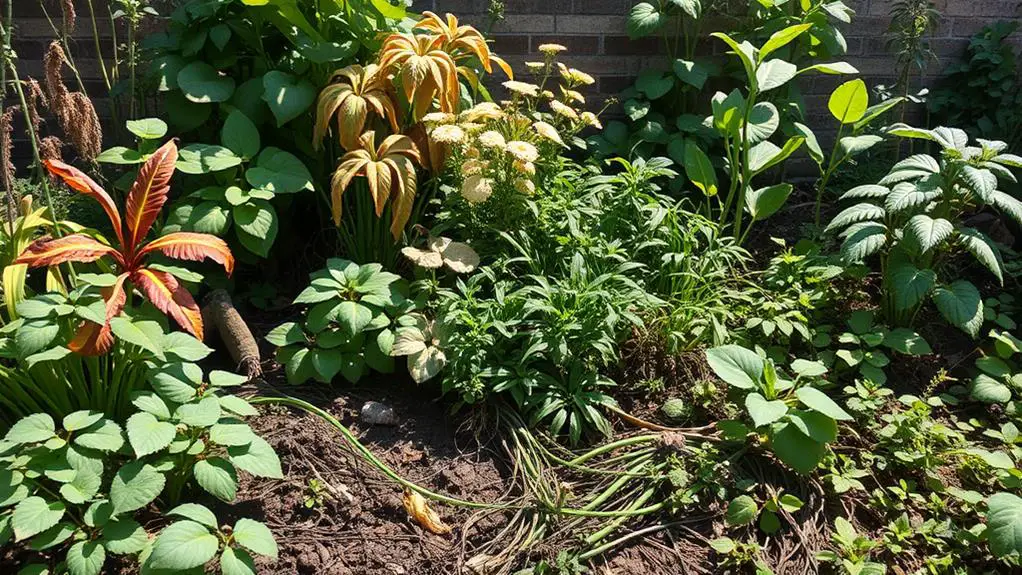
When deciding where to plant, make sure you consider how much sunlight your garden gets throughout the day.
Check for any microclimates created by nearby structures, as they can change temperature and moisture levels.
Assess Sunlight Availability
Understanding the importance of sunlight availability can make or break your gardening success. Different plants have varying needs when it comes to sunlight. Most vegetables, for instance, require at least 6-8 hours of direct sunlight each day to grow well. Knowing this helps you choose the best spots in your garden to plant them, ensuring you have healthy plants that thrive.
When planning your garden, take note of how sunlight moves across your space throughout the day. Shady areas, especially those under trees, can hinder the growth of sun-loving plants due to reduced light and competition for nutrients and water.
Here are some helpful gardening tips to contemplate:
- Observe sunlight patterns: Watch how shadows shift from morning to evening and across different seasons.
- Identify your plant needs: Group plants with similar sunlight requirements together to maximize their growth.
- Consider obstacles: Be mindful of structures like fences or buildings that might block sunlight.
Consider Microclimates Impact
After evaluating sunlight availability, it's equally important to contemplate the impact of microclimates on your planting location. Microclimates are small areas within your garden that have different conditions than the surrounding environment. Factors like elevation, nearby structures, and trees can create these unique pockets.
You'll want to assess how sunlight varies throughout your garden beds. South-facing areas usually get the most sunlight, making them perfect for sun-loving plants. Shaded spots, on the other hand, mightn't be ideal for those same plants. Regularly observing these areas can help you understand the temperature variations that affect your garden.
Cooler spots could support cool-weather crops, while warmer areas might extend the growing season for heat-loving plants. Buildings can influence microclimates too. They often retain heat, making nearby areas warmer, which is great for certain plants. However, these structures can also create wind tunnels that stress delicate plants.
By documenting these conditions, you can optimize plant placement, ensuring each plant thrives in its preferred environment. Understanding microclimates helps you make informed decisions, promoting soil and plant health.
Evaluate Soil Conditions
Before planting, it's important to evaluate the soil conditions in your garden. Healthy soil is the foundation for strong and productive plants. Start by conducting a soil test to check nutrient levels, pH, and any contaminants. This step guarantees your plants have a suitable environment to grow.
Well-draining soil is essential. If the soil doesn't drain properly, it can lead to root rot, weakening your plants. On the other hand, compacted soil restricts root growth and water absorption, which can harm plant health.
To improve soil structure and fertility, incorporate organic matter like compost or mulch. This not only enhances soil quality but also promotes soil microbes, which are crucial for a healthy soil ecosystem.
Here are some tips to get started:
- Test your soil: Determine nutrient levels and pH.
- Improve drainage: Add organic matter to loosen compacted soil.
- Monitor moisture: Verify the soil retains adequate moisture without becoming waterlogged.
Soil Quality and Health
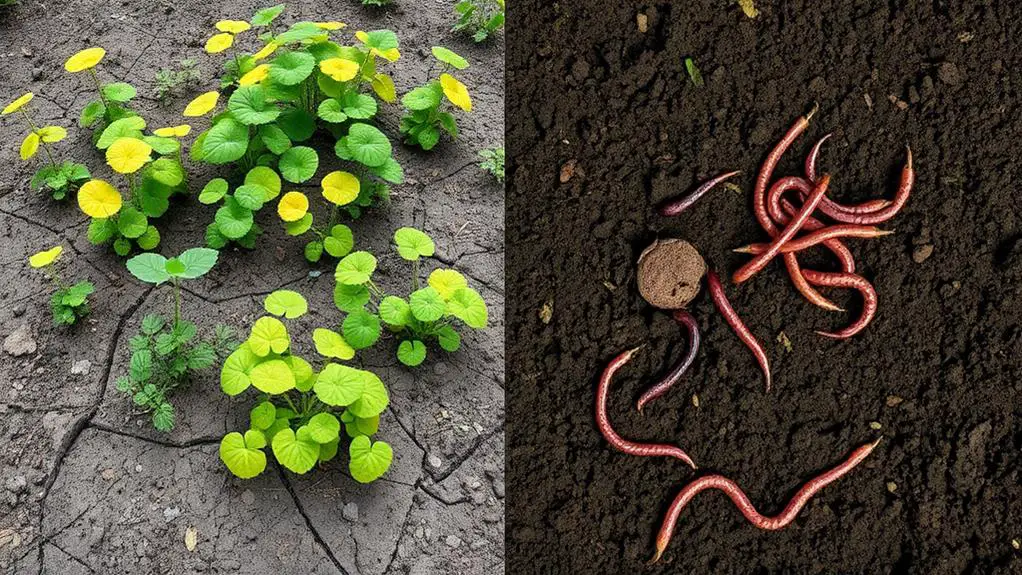
Ensuring your garden flourishes hinges on maintaining excellent soil quality and health. Poor soil quality, often seen in low nutrient content and poor drainage, can really hurt your plants. Regular soil testing is key to finding out what your soil needs. Adding organic matter like compost and mulch will boost soil structure and fertility. This also increases microbial activity, which helps with nutrient cycling—a process essential for plant health.
Compacted soil is another problem. It restricts root growth and water absorption, leading to weak plants. To avoid this, try not to over-till your soil. No-till methods can help keep your soil structure intact.
Also, keep an eye on your soil pH. Most garden plants thrive in slightly acidic soil (pH 6.0 to 6.5). Regular pH testing and adjustments can make a big difference.
Routine soil care is essential. Neglecting your soil can reduce crop yields and make plants more vulnerable to pests and diseases. Take time to amend your soil and support its health.
Watering Practices
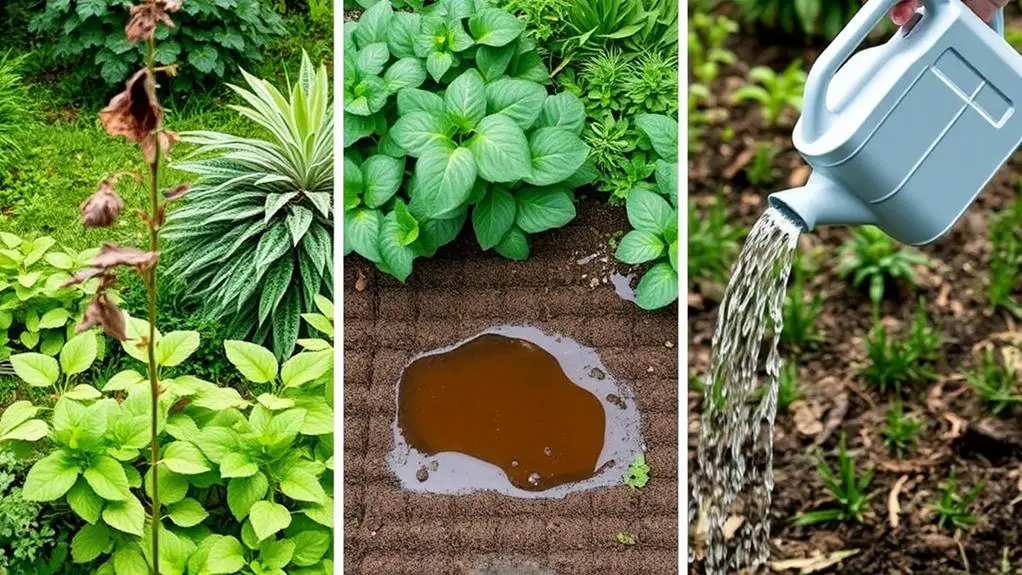
Maintaining healthy soil is just one part of a successful garden; knowing how to water your plants properly is equally important. Overwatering is a common mistake that leads to root rot, yellowing leaves, and mushy stems. Aim for about 1 inch of water per week, including rainfall.
Inconsistent watering can stress your plants and hinder their growth, so regularly check soil moisture to guarantee they get what they need. Underwatering is just as harmful. It causes wilting and stunted growth, especially in plants needing consistently moist soil.
Adjust your watering schedule as the seasons change to prevent this issue. Deep watering is key to promoting strong root development. Shallow watering only moistens the top inch of soil, making your plants less resilient during dry spells.
Using mulch around your plants helps retain soil moisture and reduces evaporation. It also regulates soil temperature, contributing to overall plant health.
- Check soil moisture regularly to avoid overwatering or underwatering.
- Use mulch to retain moisture and regulate soil temperature.
- Practice deep watering to encourage strong root development.
With these tips, you'll guarantee your plants thrive, creating a flourishing garden.
Pest and Disease Management
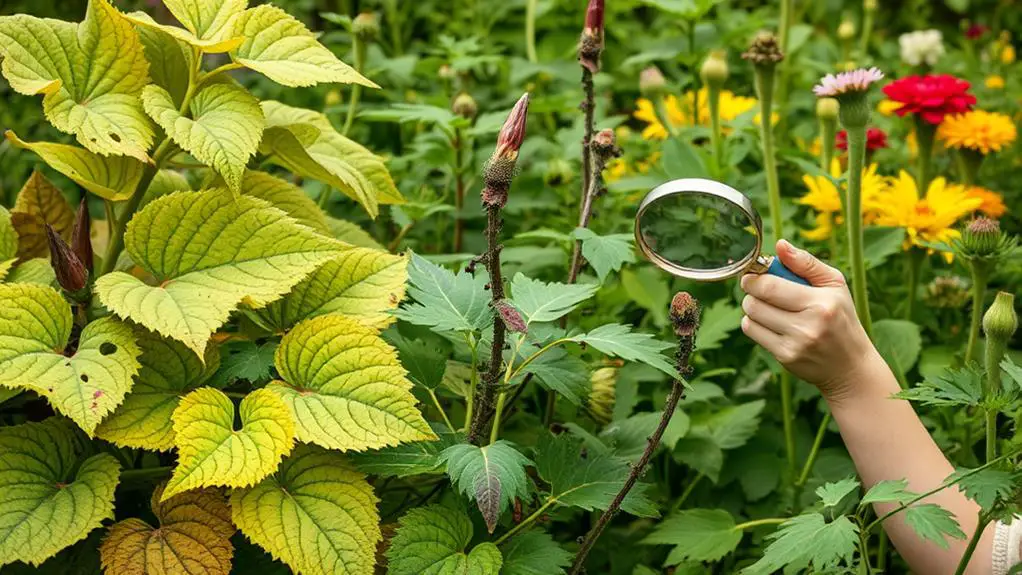
Catching pests and diseases early is crucial to maintaining a healthy garden. Early detection allows you to manage infestations effectively before they become major problems. One key strategy is Integrated Pest Management (IPM), which combines monitoring, prevention, and control methods to reduce the need for chemical pesticides while keeping your garden thriving.
Start by regularly inspecting your plants. Look for signs of stress like discoloration or wilting, which can indicate pest issues. Monitoring your garden closely helps you spot trouble early on and take action quickly.
Planting disease resistant varieties can also make a big difference. These plants are bred to withstand specific pests and pathogens, reducing the risk of disease and keeping your garden healthy.
Beneficial insects, like ladybugs and lacewings, are natural allies in pest control. They feed on common garden pests such as aphids and caterpillars. Encourage these helpful bugs by planting a variety of flowers to create a welcoming environment for them.
Fertilization Practices
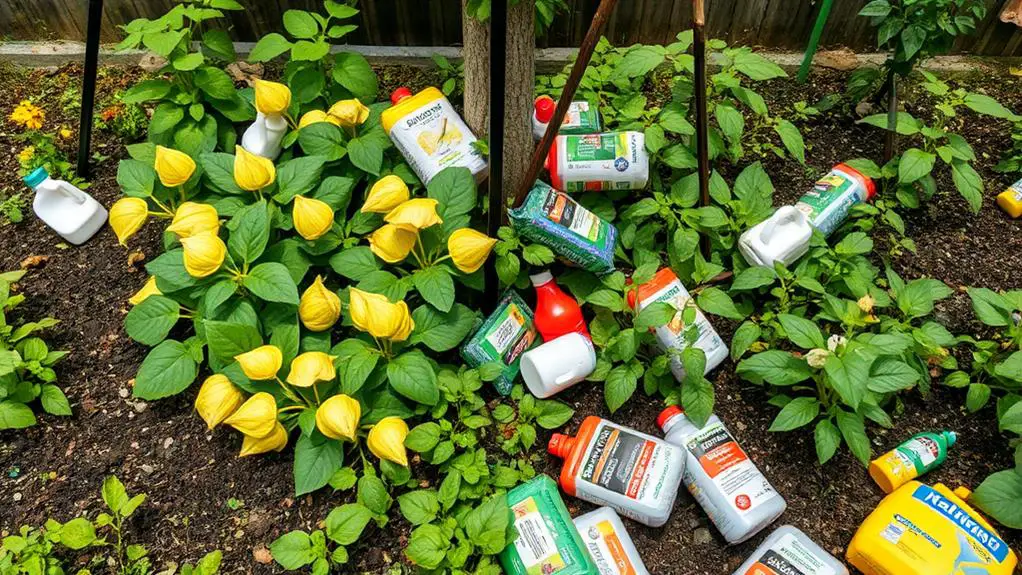
When it comes to fertilization, it's easy to make mistakes like overusing chemical fertilizers, which can harm your plants.
Ignoring soil health is another common issue, so be sure to test your soil to understand its needs.
Balancing nutrient supply is key, and using natural amendments like compost can help keep your garden thriving.
Overusing Chemical Fertilizers
One of the most common pitfalls for novice gardeners is the overuse of chemical fertilizers. It's easy to think that more fertilizer means better plants, but that's not true. Overusing chemical fertilizers can lead to nutrient buildup in the soil, causing toxicity that damages plant roots and foliage.
Using too much synthetic fertilizer disrupts the natural microbial balance in your soil, reducing its overall health and fertility. This practice also has several harmful side effects, such as:
- Soil salinity issues: High salt content makes it tough for plants to absorb water and nutrients.
- Water pollution: Runoff from over-fertilized gardens can contaminate local waterways, leading to algal blooms.
- Long-term soil health: Excessive chemicals harm the soil, making it less fertile over time.
For a healthier garden, consider switching to organic fertilizers like compost or worm castings. These alternatives provide essential nutrients without causing harmful side effects.
Compost, in particular, enriches the soil and supports a thriving ecosystem. By using organic options, you're promoting soil health and giving your plants a better environment to grow.
Ignoring Soil Health
Neglecting soil health is a fundamental mistake that many beginner gardeners make. When you ignore the health of your soil, you risk nutrient deficiencies that can severely impact plant growth. Many soils, especially in vegetable gardens, lack essential nutrients because plants quickly deplete them. Regular fertilization is imperative to replenish these nutrients.
Consider using organic options like compost and worm castings, which enhance soil fertility without harming the ecosystem.
One key step you shouldn't skip is testing your soil pH. Slightly acidic soil, around pH 6.5, is usually best for nutrient availability. If you neglect this, your plants may suffer poor health and lower yields.
It's also important to follow recommended guidelines for fertilizer application. Over-fertilizing can lead to nutrient buildup and toxicity, damaging plant roots and foliage.
Incorporating organic matter, such as mulch and compost, helps improve soil structure and moisture retention. It also supports beneficial microbes, which are crucial for long-term soil health.
Balancing Nutrient Supply
Balancing nutrient supply through effective fertilization practices is key to a thriving garden. Over-fertilizing can harm your plants by causing nutrient buildup and toxicity, which damages roots and foliage. To avoid this, always follow recommended application rates for commercial fertilizers.
Regular soil testing is a great way to identify nutrient deficiencies. By knowing exactly what your soil needs, you can apply the right fertilizers and avoid wasting time and money on unnecessary products.
Organic fertilizers, like compost and worm castings, are excellent choices because they improve soil structure and fertility without the long-term damage synthetic options can cause.
Timing is essential when it comes to fertilization. You should apply nutrients during your plants' active growth periods to maximize their uptake and effectiveness.
In addition to proper fertilization, consider using crop rotation and cover crops. These practices can naturally enhance soil nutrient levels, reducing your reliance on synthetic fertilizers and keeping your soil healthy.
- Avoid over-fertilizing: Follow recommended rates to prevent nutrient toxicity.
- Use organic fertilizers: Improve soil health without long-term damage.
- Incorporate crop rotation and cover crops: Naturally maintain soil nutrients.
Covering and Protecting Soil

When you leave soil exposed, it becomes vulnerable to erosion and weed invasion, making it essential to cover it with mulch or organic materials. By covering and protecting soil, you're taking a vital step in maintaining a healthy garden.
Mulch not only suppresses weed growth, but it also helps retain soil moisture. This means you won't need to water as often, and your plants will thrive better.
Using organic materials like straw or wood chips as mulch is beneficial. As these materials decompose, they feed your soil with nutrients, supporting healthy microbial activity. This process enriches your garden ecosystem, making it more balanced and resilient.
Think of bare soil as an open wound—it invites pests and diseases. Covered soil, however, works like a protective barrier, keeping unwanted intruders at bay.
Regular mulching also improves soil structure, preventing compaction. This allows water to absorb better and roots to grow more efficiently.
Consistent mulching helps you create a thriving environment for your plants. So, remember to keep your soil protected and covered. Your garden will thank you with robust growth and fewer problems, creating a beautiful and healthy space for you to enjoy.
Frequently Asked Questions
What Is the Most Common Mistake of First Time Gardeners?
You might overwater your plants, thinking they need more water than they do. This can cause root rot and yellowing leaves. Remember, most plants only need about an inch of water per week to thrive.
What Not to Do in Gardening?
Don't overwater your plants; it leads to root rot. Avoid planting at the wrong time and guarantee proper spacing. Rotate crops annually, and regularly monitor for pests and diseases to keep your garden healthy.
What Questions Should a Gardener Answer Before Beginning a Garden?
You should ask yourself about your local hardiness zone, sunlight availability, soil quality, and water needs. Don't forget to plan for pest management. These questions guarantee your garden thrives and avoids common pitfalls.
What Is the Hardest Thing About Gardening?
The hardest thing about gardening is managing the different water needs of plants. You'll find that inconsistent watering causes stress and reduces yields. Understanding soil health, timing, pest management, and plant spacing also adds to the complexity.
Conclusion
Gardening can seem tricky at first, but don't worry—you've got this! By choosing the right plants, finding the perfect spot, and caring for your soil, you're on the right path. Remember to water wisely, keep an eye out for pests, and fertilize just enough. Mulching and protecting your soil will also help your garden thrive. With a little effort and attention, you'll soon enjoy a beautiful, healthy garden. Keep learning and growing; you're doing great!

